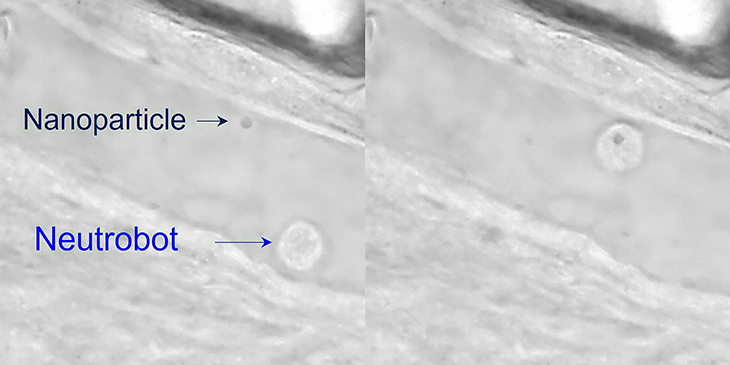
Life-threatening illnesses have been the bane of human existence. The cures are oftentimes expensive, and worse, don’t always guarantee that the ones suffering from it can regain their health. This is why scientists and researchers have been scrambling for ways to find more effective methods.
The solution can be in white blood cells (WBC). They have been able to turn WBCs into a type of micro-robot that could specifically treat and prevent life threatening illnesses. This was according to the scientists from China who have devoted much of their time into the creation.
These tiny machines are guided using lasers and are made from white blood cells that they called neutrophils. These come in a set so they can revolutionize the area of medicine, scientists believe.
The WBC are called ‘neutrobots.’ Their main goal is to deliver drugs to the exact locations. To help them to their destinations are laser beams. The other devices out in the market made to do the same thing had synthetic materials in them, and in some patients, these brought about dire immune responses and biological rejection.
“The neutrophil microcrafts can be remotely activated by light and then navigated to the target position along a designated route,” said project leader Dr. Xianchuang Zheng. He is from the Institute of Nanophotonics at Jinan University, China.
Experiments on the tails of zebrafish were made. With this, the Chinese team made use of and innovative and extremely precise laser called a scanning optical tweezers (SOTs) in order to do these three potential applications just by using neutrobots.
SOTs use a highly focused beam so that they can point to a certain area. These are led to hold and move microscopic and sub-microscopic particles much like how tweezers work. These were performed with the aid of neutrobots for cell therapy, targeted nanomedicine, and removal of debris or organic waste that may bring about health problems. Plus, these neutrobots are able to bring payloads directly to a tumor, blood clot, or infection for treatment.
“By integrating the non-invasive manipulation of optical tweezers and innate immunologic function of neutrophils, the proposed microcraft provides new insight for the construction of native medical microdevices for precision medicine,” Dr. Zheng explained. “The neutrophil microcraft can be activated or recovered in a controlled manner and the migration is fully steerable—just like driving a vehicle.”
The zebrafish have high blood circulation to their tails, allowing the neutrophils to be clearly identified through fluorescence labelling.
Made from Natural Compounds
This method is relatively safer that the nanobot medical applications out right now. These are like these miniscule crabs said to be agents that are able to get rid of tumors, clear clogged arteries, or stop internal bleeding in the body. Ordinary neutrophils right now are oftentimes slow to move. These also may travel to the wrong direction. This may have been why development of micro-robotics has leaned more to artificial solutions simply because these were safer.
The maneuvers of the neutrobots are remote activation by SOTs at a specified time and location. These are made to be so precise so that they are able to go to a specific route and at a reasonable speed. Moreover, the medical microrobots that are now being developed need injections or they need to be swallowed since they are in capsule form, guiding these inside the body can be tricky. However, researchers have also discovered that they trigger immune reactions in small animals. As a result, these needed to be removed even when the job hasn’t be done to completion.
The study mentioned in the journal ACS Central Science shows that this was first achieved with the laser used as a guide as they are placed inside the living animals. The microrobot is driven by light and can be moved up with a speed of 1.3 microns per second, which is already thrice faster than how the pervious neutrophils have moved.
In a test that was made, a neutrobot was maneuvered through a blood vessel wall and carried to the surrounding tissue. Then, there was one that picked up and transported a plastic nanoparticle. This is promising as it shows its ability to carry medicine effectively. In fact, when one was pushed toward red blood cell debris, it was able to surround the pieces there.
While it may seem like stuff of the future, this could become the standardized form of cure if it gets perfected, and this may prove to be hopeful for this who suffer from very serious diseases that require targeted cure.



